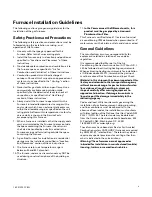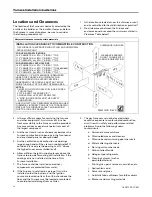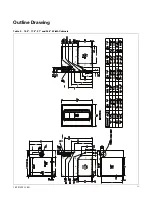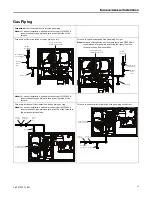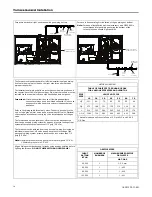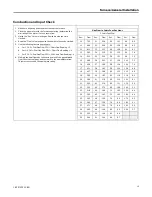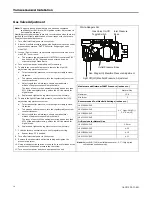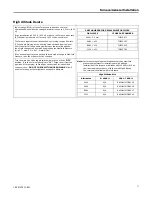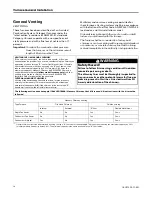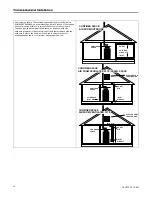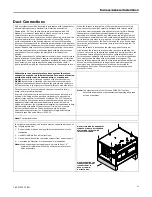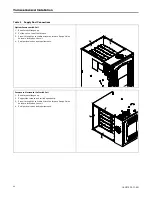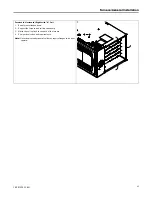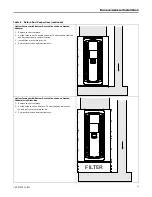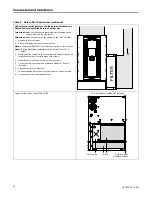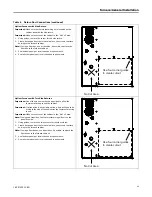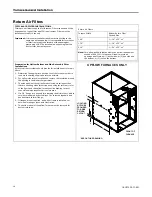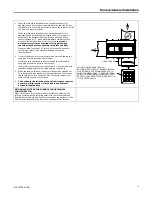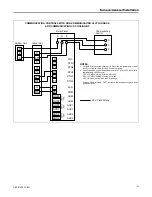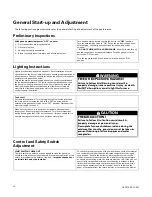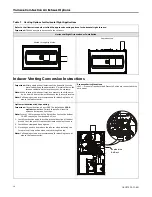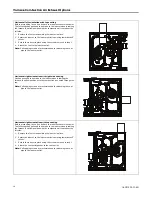
18-CE15D1-1C-EN
23
Duct Connections
Air duct systems should be installed in accordance with standards for
air conditioning systems, National Fire Protection Association
Pamphlet No. 90. They should be sized in accordance with ACCA
Manual D or whichever is applicable. Check on controls to make
certain they are correct for the electrical supply.
Central furnaces, when used in connection with cooling units, shall be
installed in parallel or on the upstream side of the cooling units to
avoid condensation in the heating element, unless the furnace has
been specifically approved for downstream installation. With a parallel
flow arrangement, the dampers or other means used to control flow of
air shall be adequate to prevent chilled air from entering the furnace,
and if manually operated, must be equipped with means to prevent
operation of either unit unless the damper is in full heat or cool
position.
Flexible connections of nonflammable material may be used for return
air and discharge connections to reduce the transmission of vibration.
Though these units have been specifically designed for quiet, vibration
free operation, air ducts can act as sounding boards and could, if
poorly installed, amplify the slightest vibration to the annoyance level.
When the furnace is located in a utility room adjacent to the living
area, the system should be carefully designed with returns which
minimize noise transmission through the return air grille. Although
these winter air conditioners are designed with large blowers
operating at moderate speeds, any blower moving a high volume of
air will produce audible noise which could be objectionable when the
unit is located very close to a living area. It is often advisable to route
the return air ducts under the floor or through the attic. Such design
permits the installation of air return remote from the living area (i.e.
central hall).
When the furnace is installed so that the supply ducts carry air
circulated by the furnace to areas outside the space containing the
furnace, the return air shall also be handled by a duct(s) sealed to the
furnace and terminating outside the space containing the furnace.
For furnaces not equipped with a cooling coil, it is recommended that
the outlet duct be provided with a removable access panel. The
opening shall be accessible when the furnace is installed and shall be
of such a size that the heat exchanger can be viewed for possible
openings using light assistance or a probe can be inserted for
sampling the air stream. The removable cover must be sealed to
prevent air leaks.
Where there is no complete return duct system, the return
connection must be run full size from the Furnace to a location
outside the utility room, basement, attic, or crawl space.
Do Not
install return air through the back of the Furnace cabinet.
Do Not
install return air through the side of the furnace cabinet on
horizontal applications without following the guidelines in the Return
Air Filters section in the figure for Horizontal furnace with side return.
Carbon monoxide, fire or smoke can cause serious bodily injury,
death, and/or property damage.
A variety of potential sources of carbon monoxide can be found in a
building or dwelling such as gas-fired clothes dryers, gas cooking
stoves, water heaters, furnaces and fireplaces. The U.S. Consumer
Product Safety Commission recommends that users of gas-burning
appliances install carbon monoxide detectors as well as fire and
smoke detectors per the manufactures installation instructions to help
alert dwelling occupants of the presence of fire, smoke or unsafe
levels of carbon monoxide. These devices should be listed by
Underwriters Laboratories, Inc.
Standards for Single and Multiple
Station Carbon Monoxide Alarms, UL 2034.
Note:
The manufacturer of your Furnace DOES NOT test any
detectors and makes no representations regarding any brand
or type of detector.
Note:
Seal per local codes
In horizontal applications, the furnace must be supported with one of
the following methods.
1.
Support below with non-combustible material as shown in the
illustration.
2.
Use BAYHANG kit. See kit instructions.
3.
Use unistrut with cabling to provide support from under the unit.
4.
Use strapping material in locations shown in illustration.
Note:
When supporting from underneath, unit must have 1.5"
minimum air clearance. Block the minimum amount of vent
holes as possible.
WHEN SUSPENDING THE HORIZONTAL
FURNACE, IT SHOULD BE SUSPENDED
BY ATTACHING TO THE CABINET
IN THE PLACES SHOWN.
WHEN SUPPORTING THE
FURNACE FROM BELOW,
SUPPORT FRONT TO
BACK (AS SHOWN)
OR SIDE TO SIDE.

